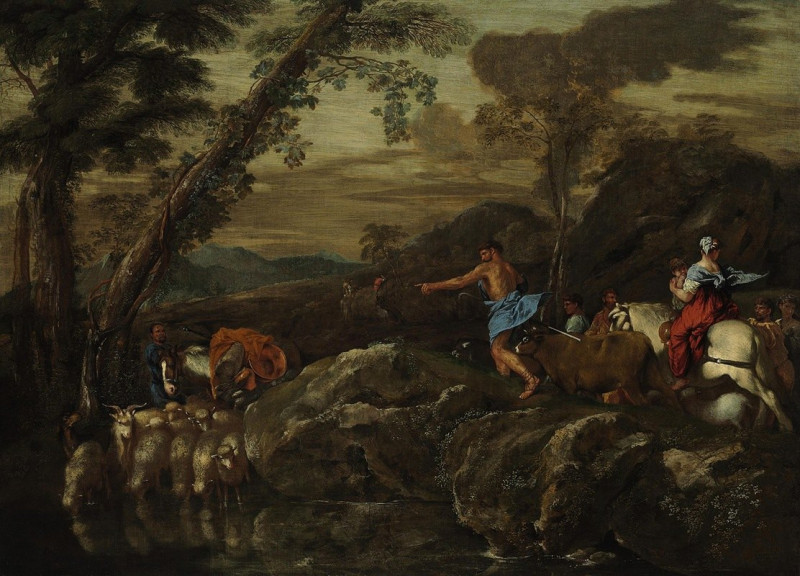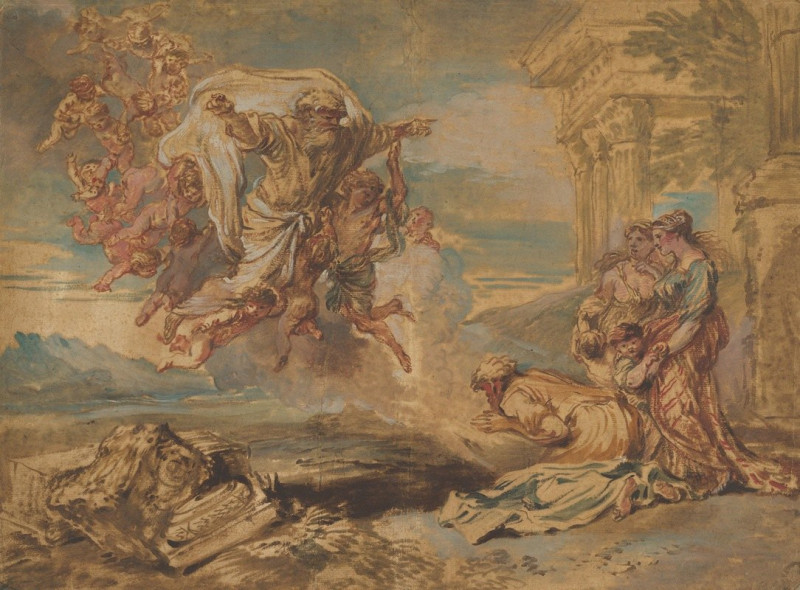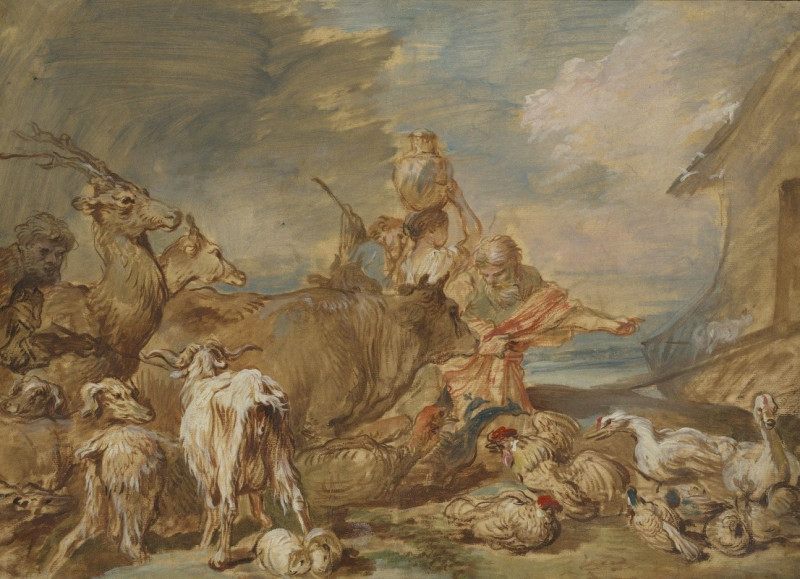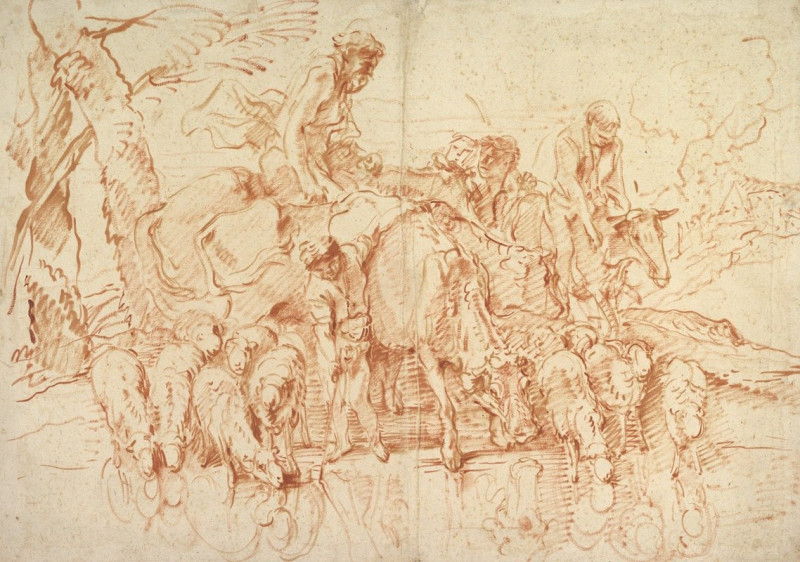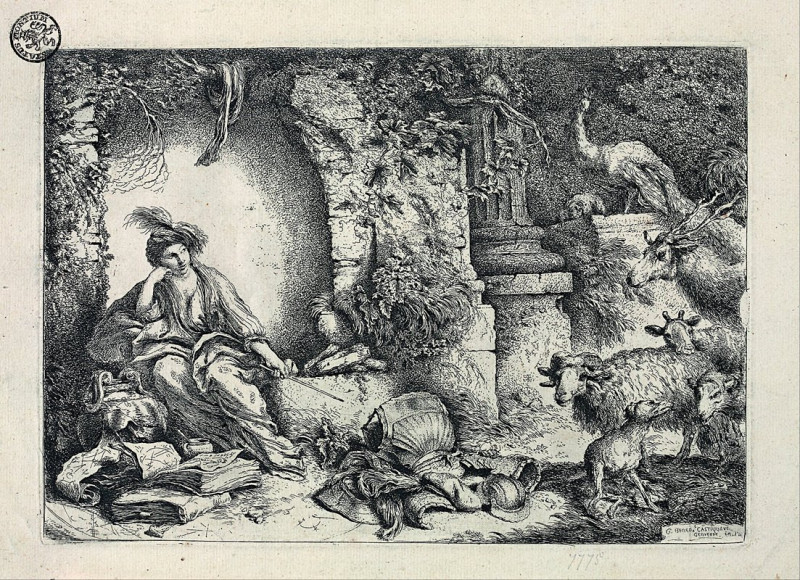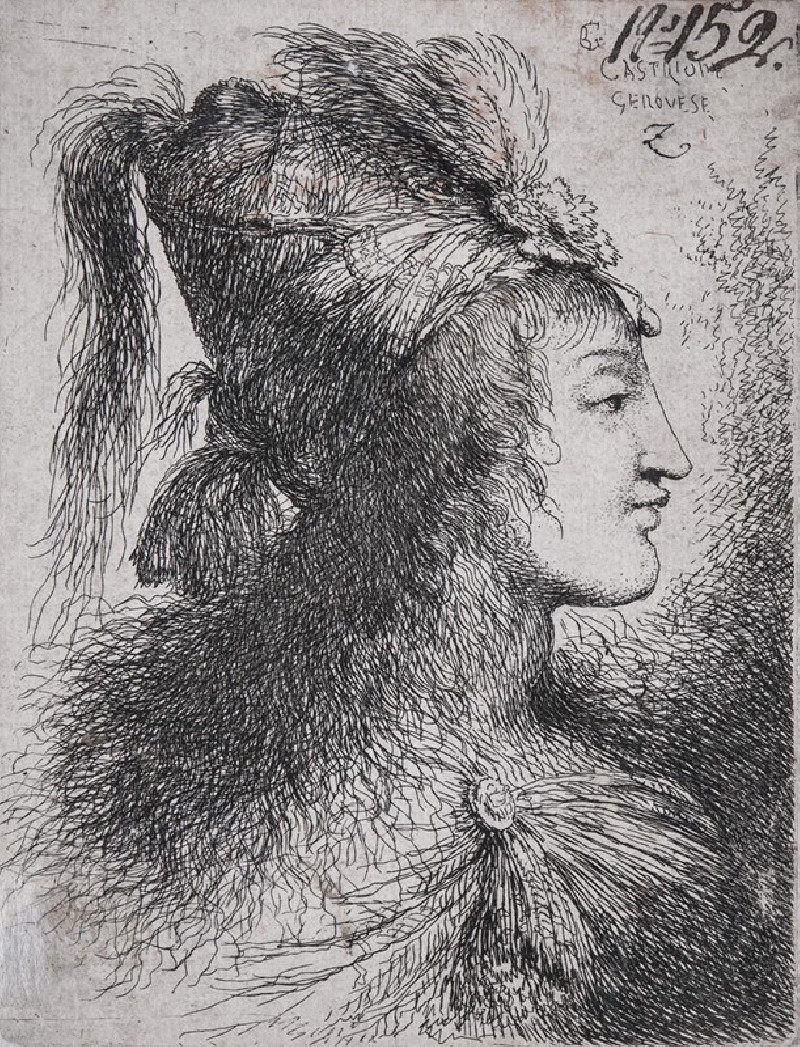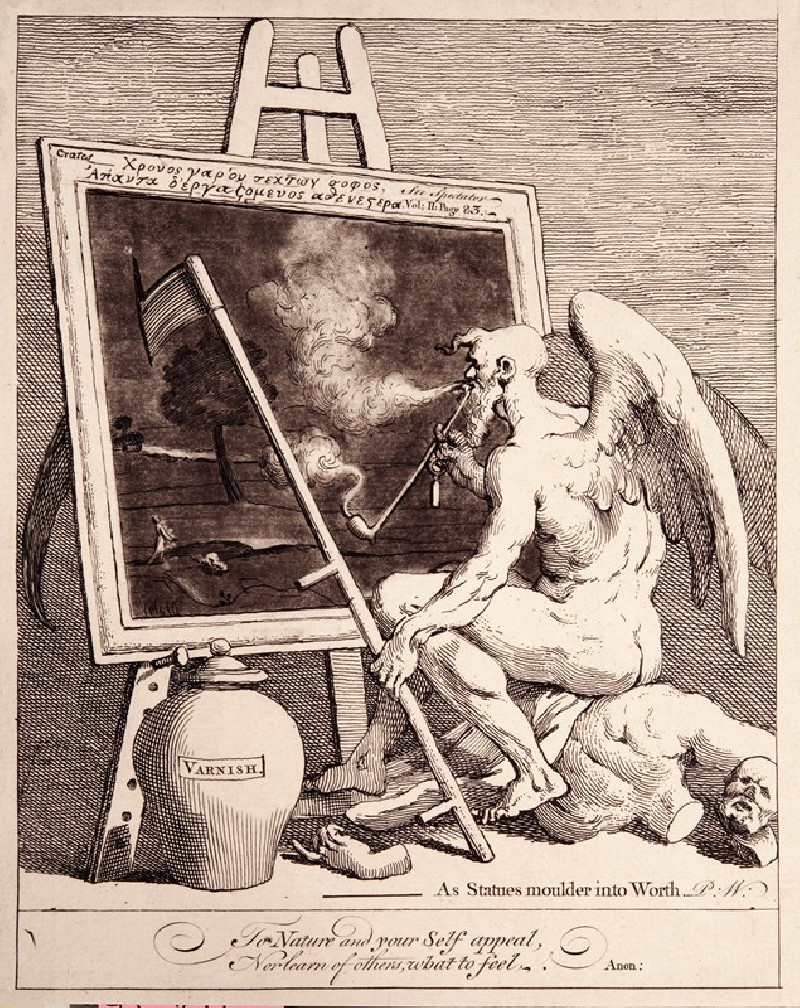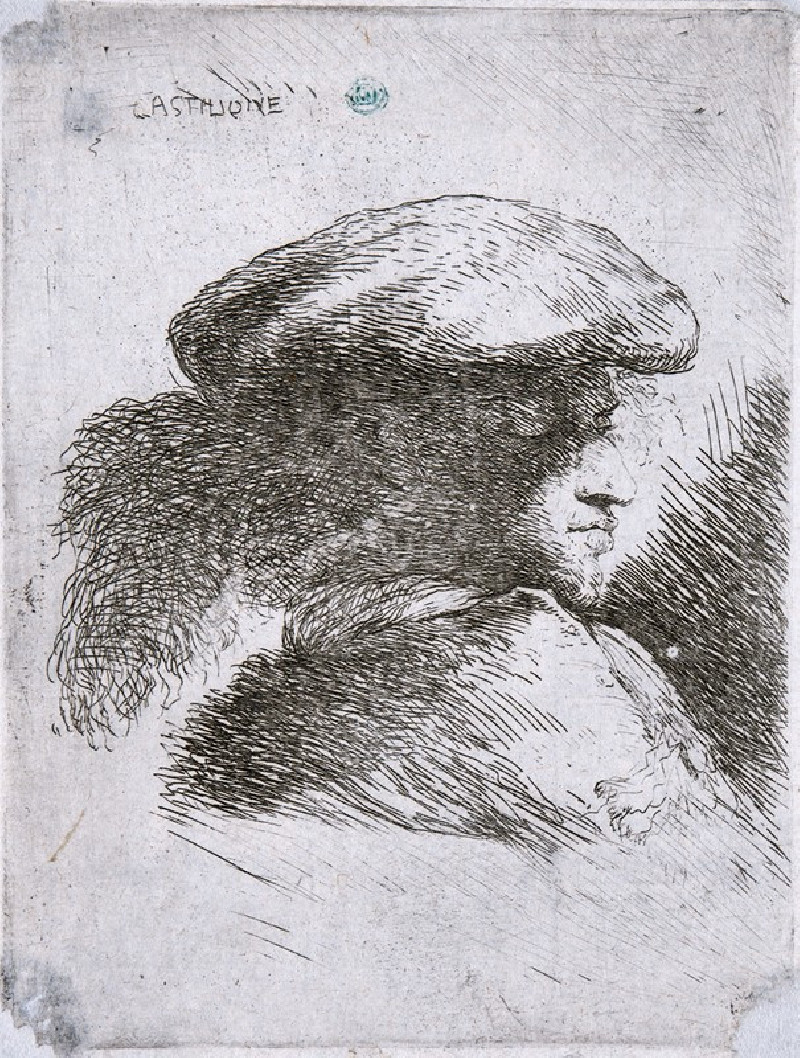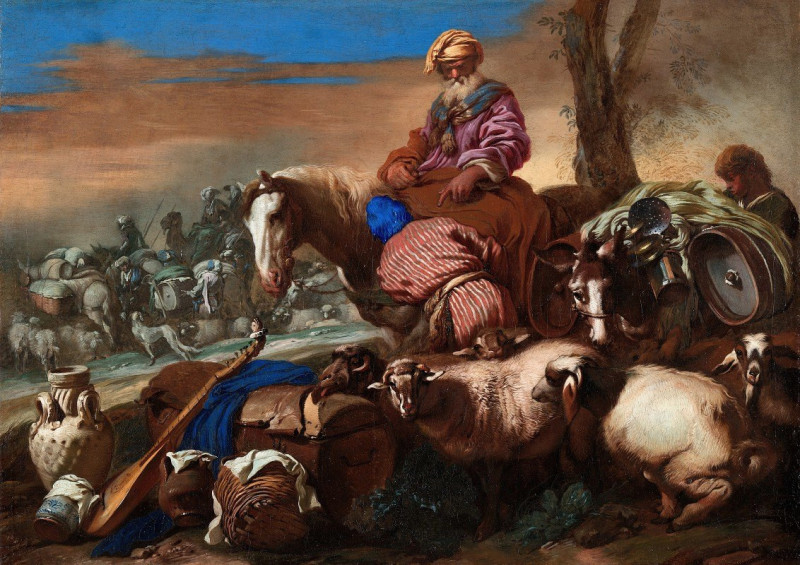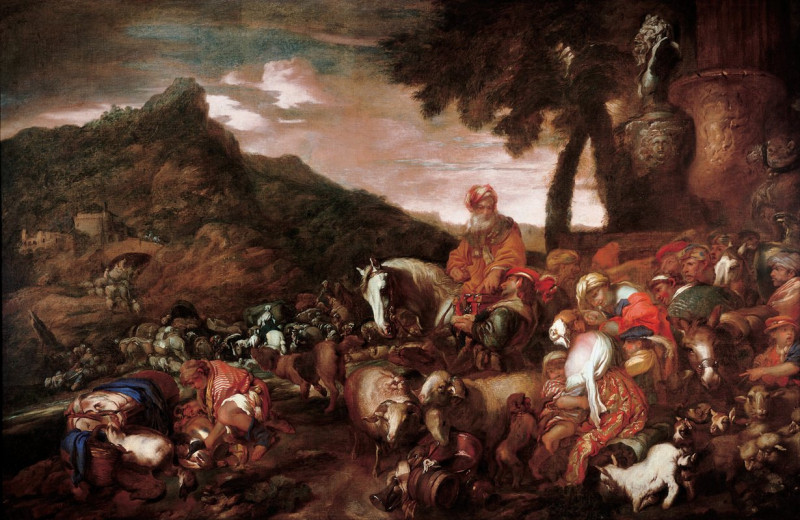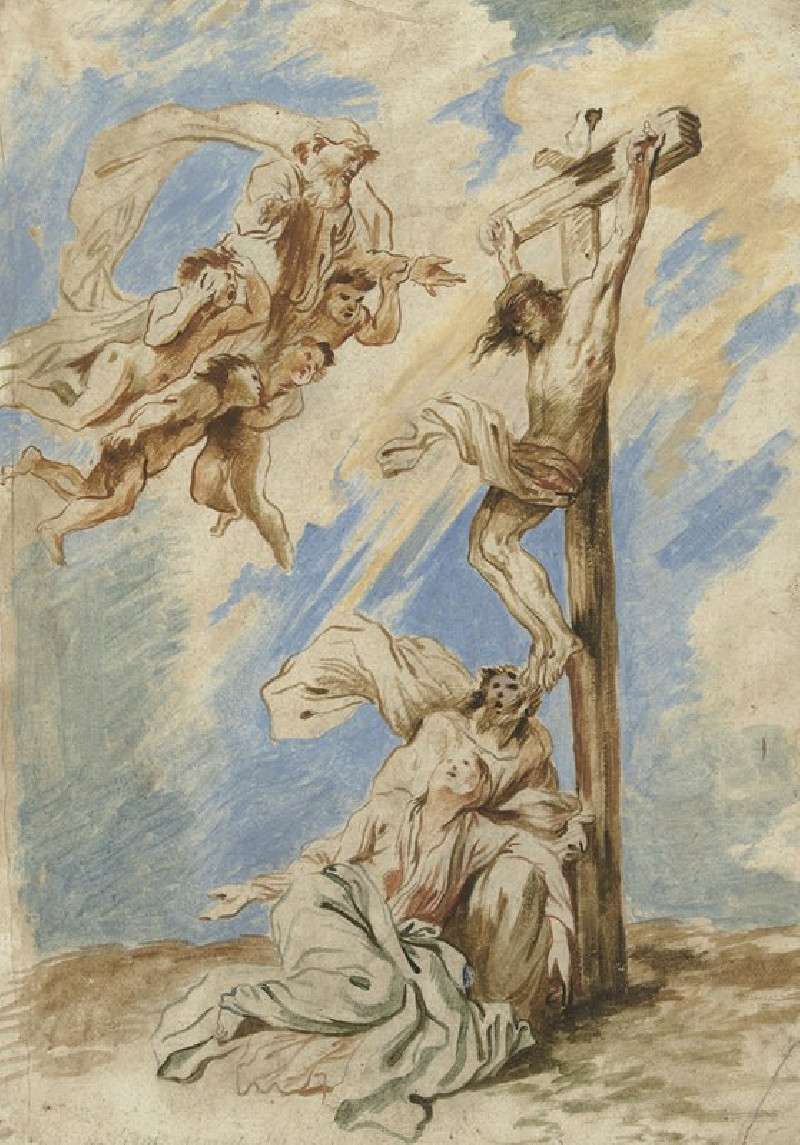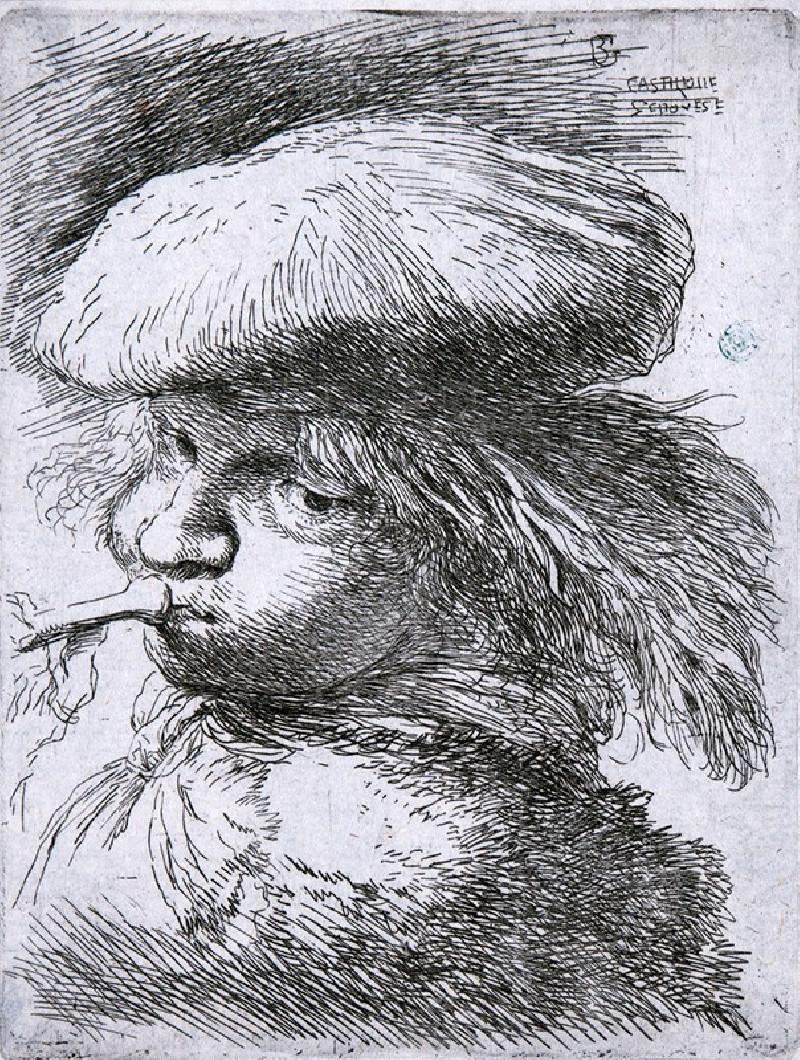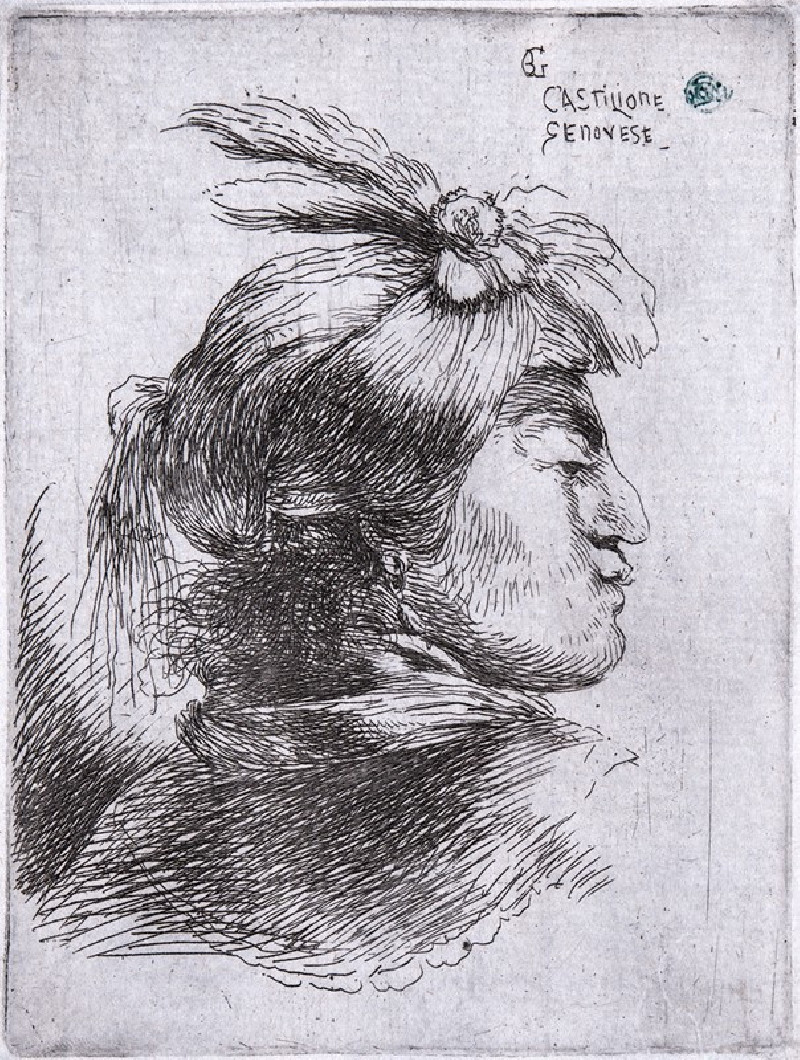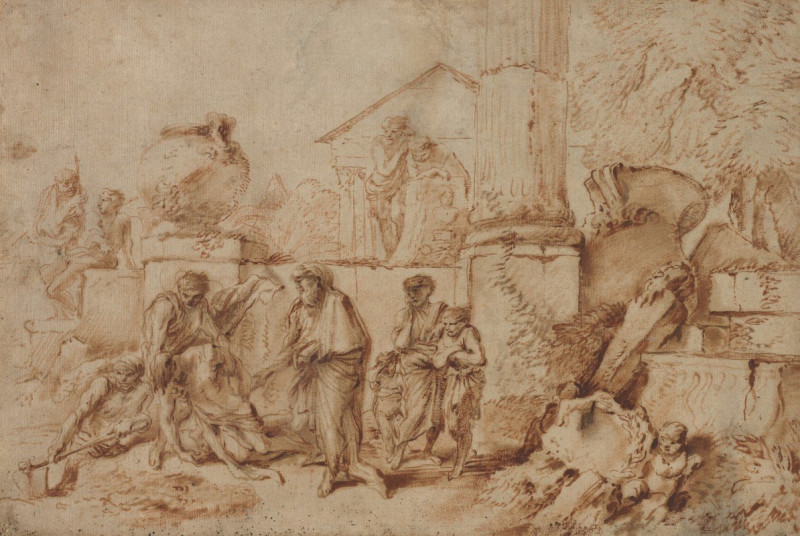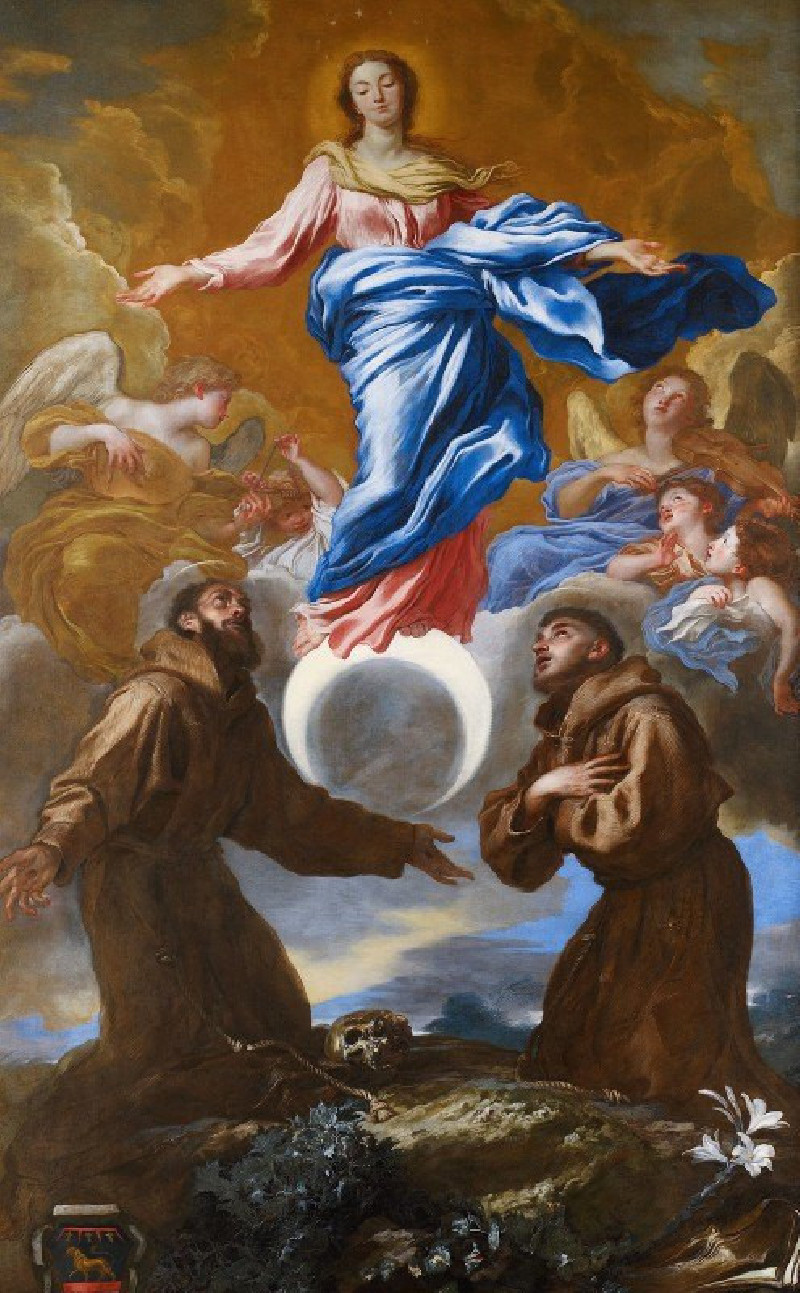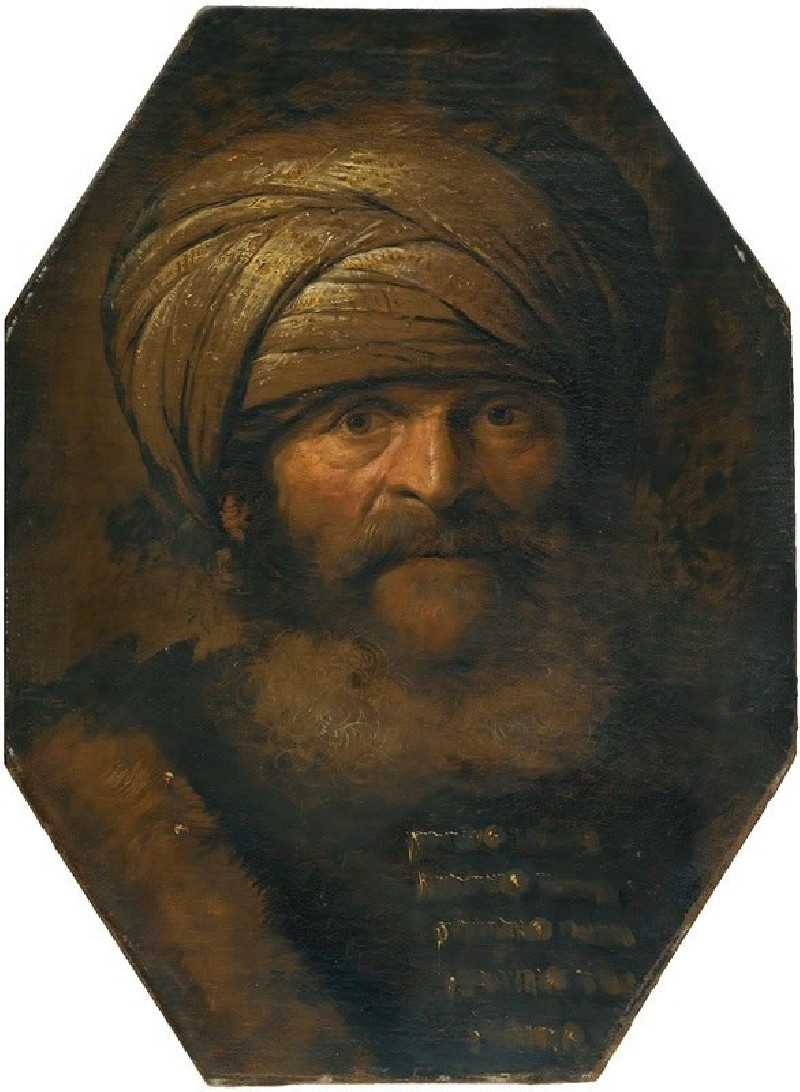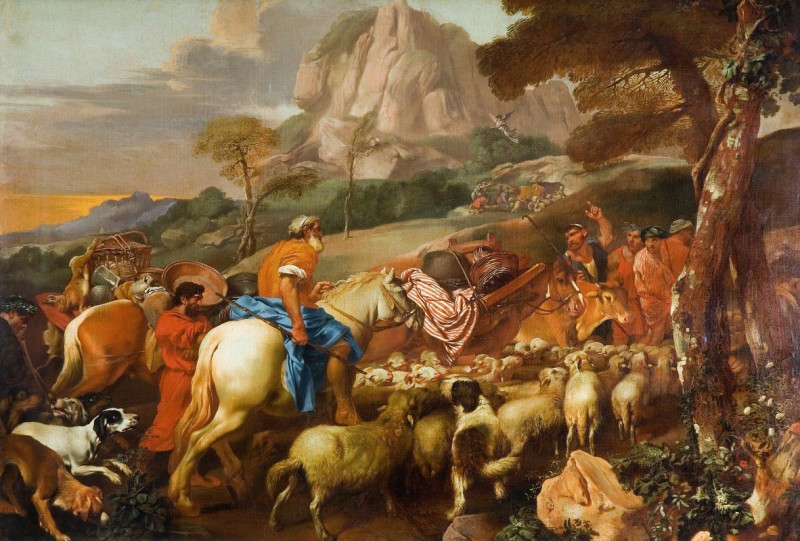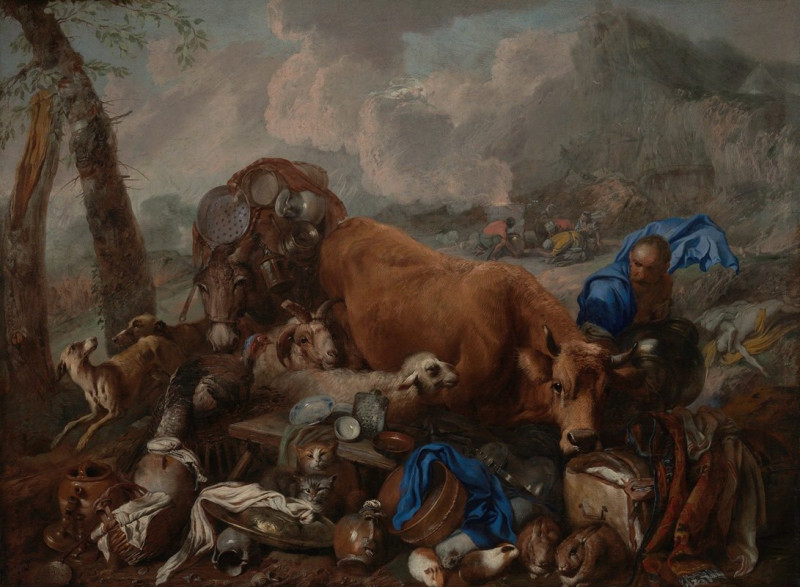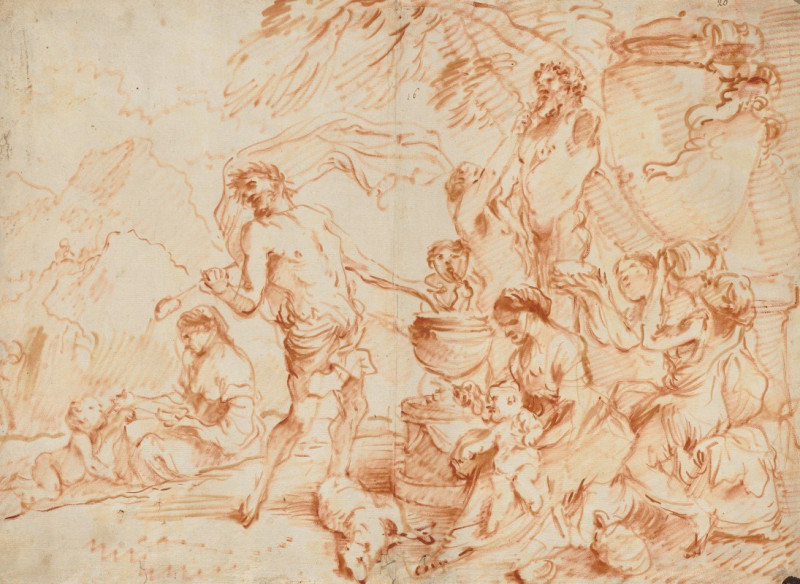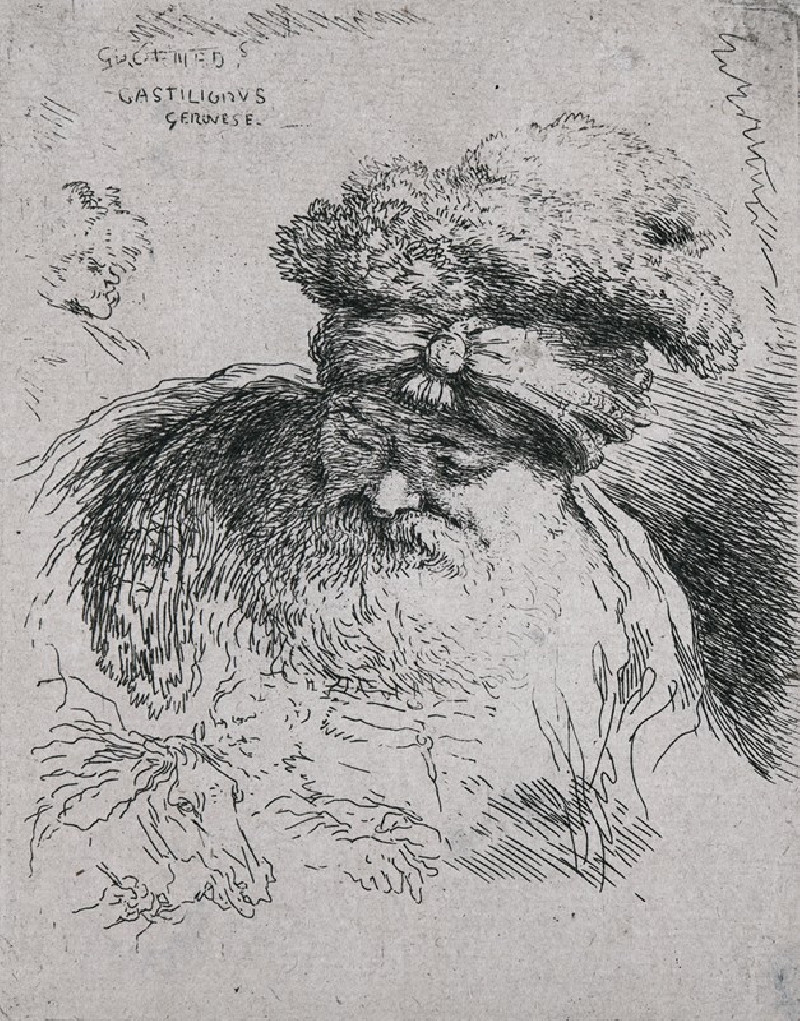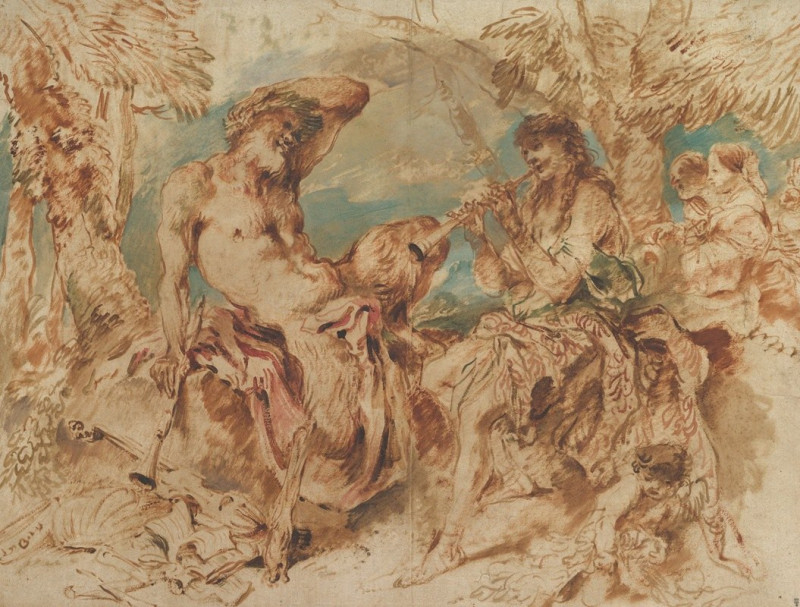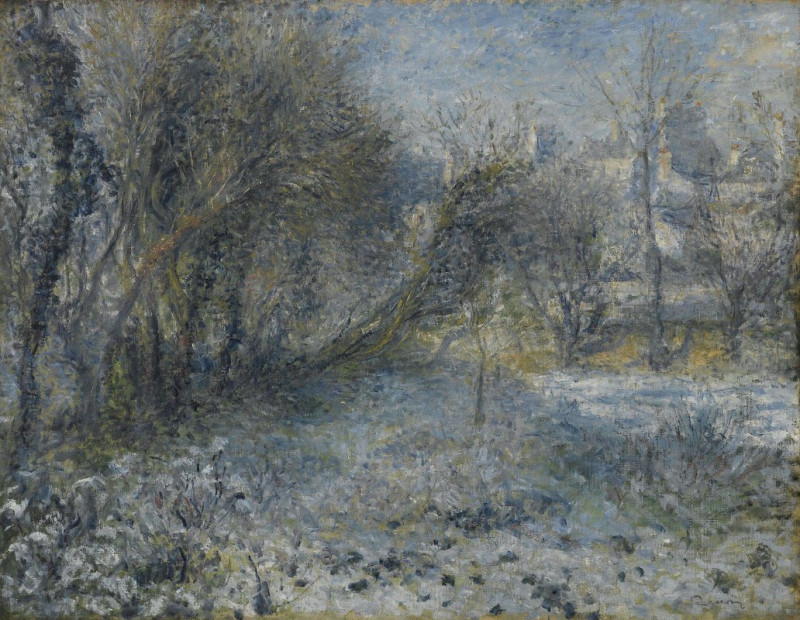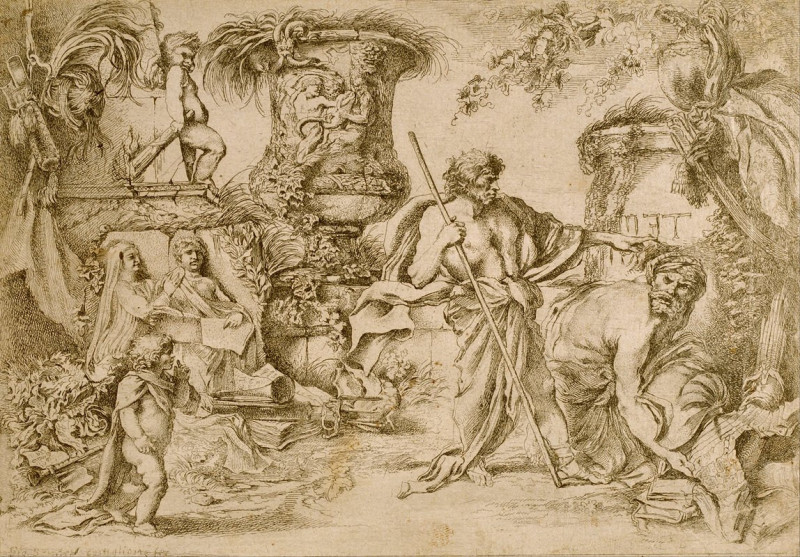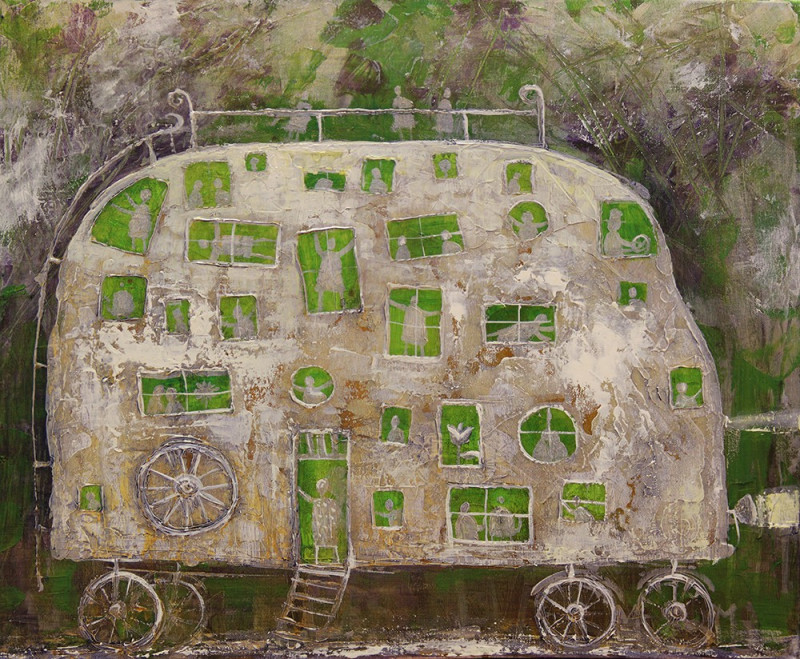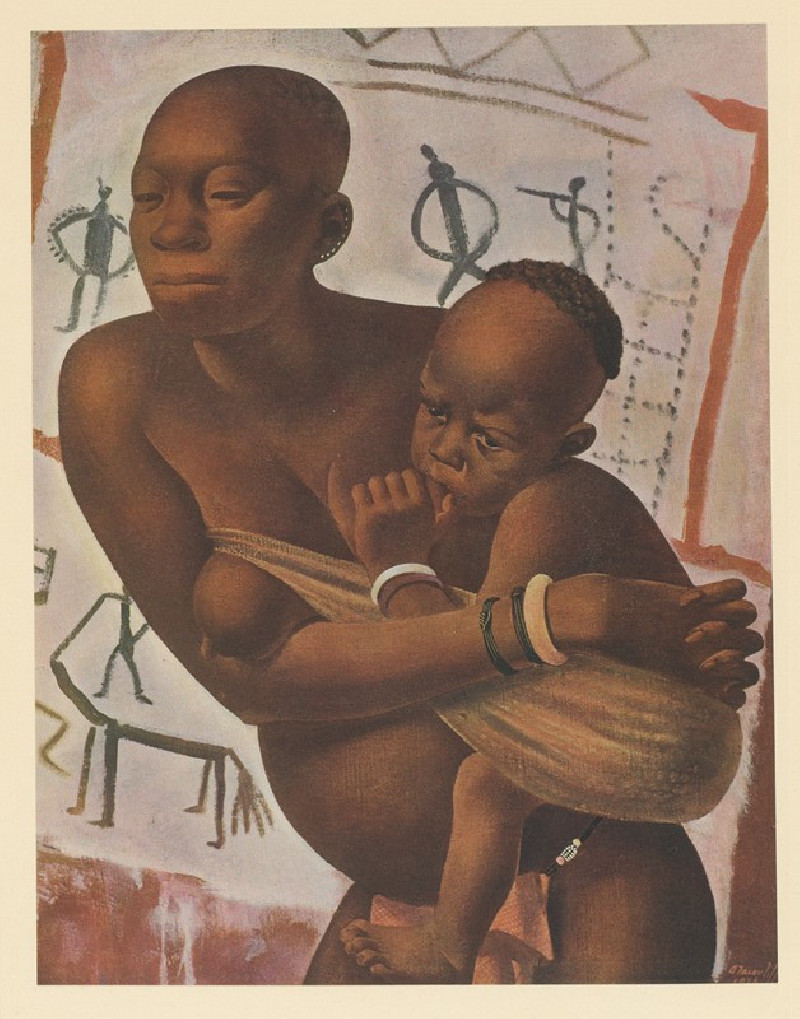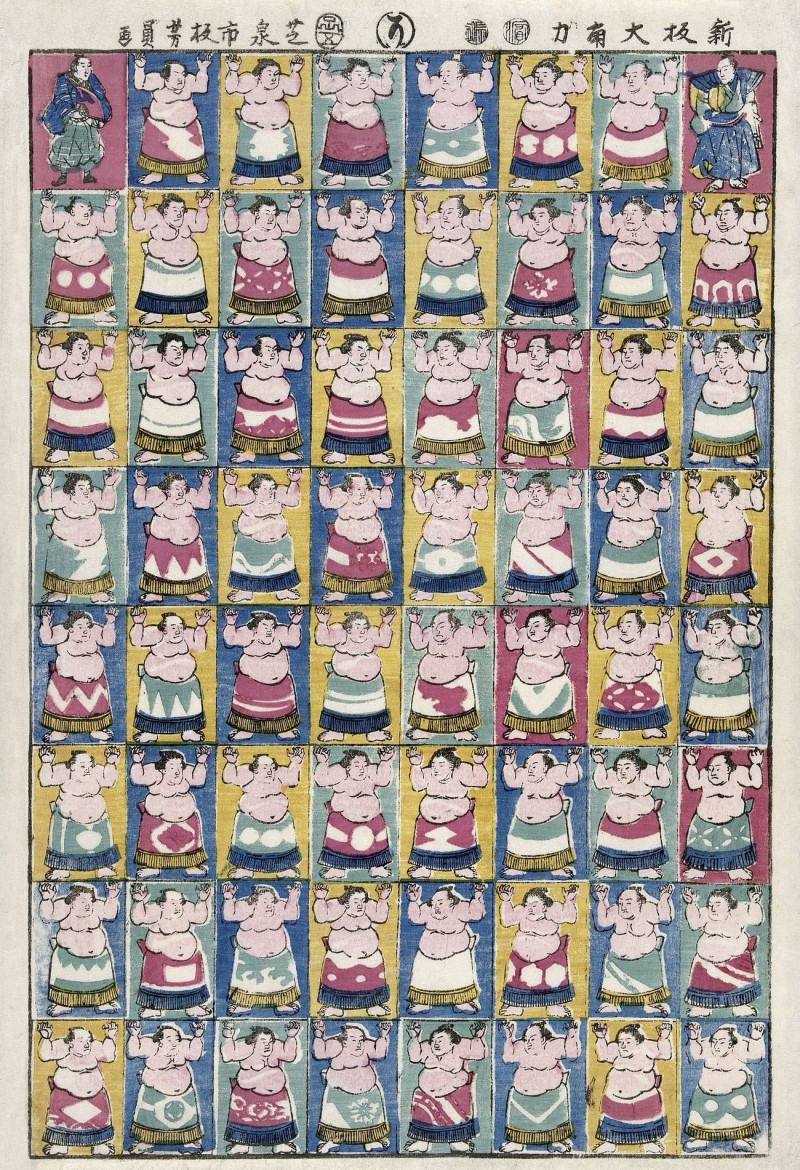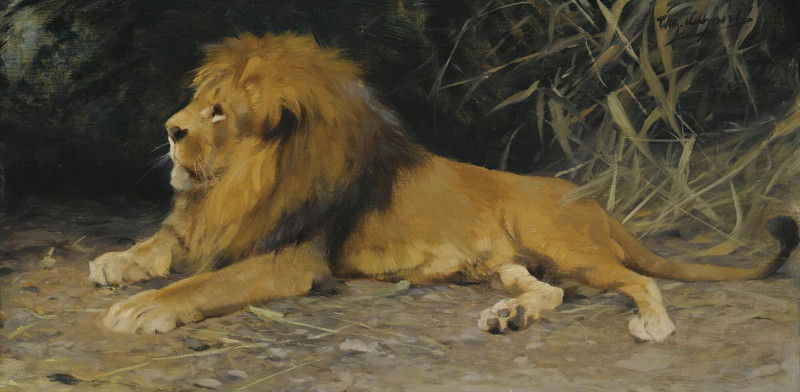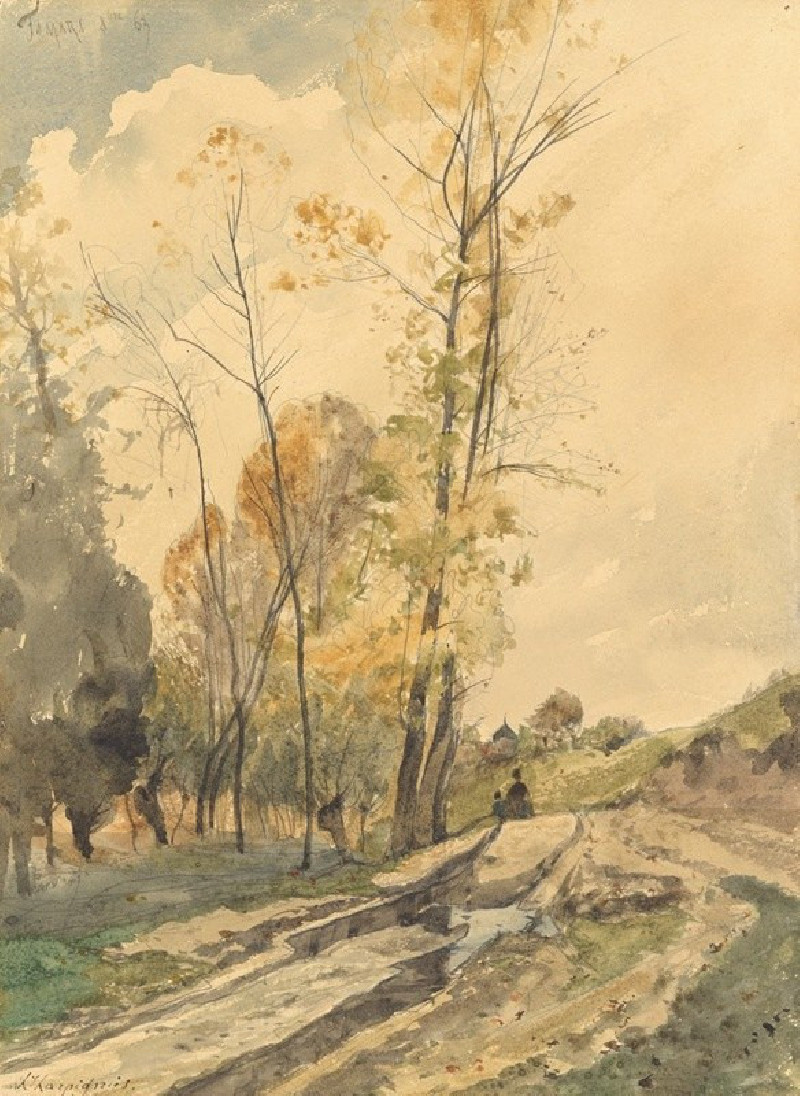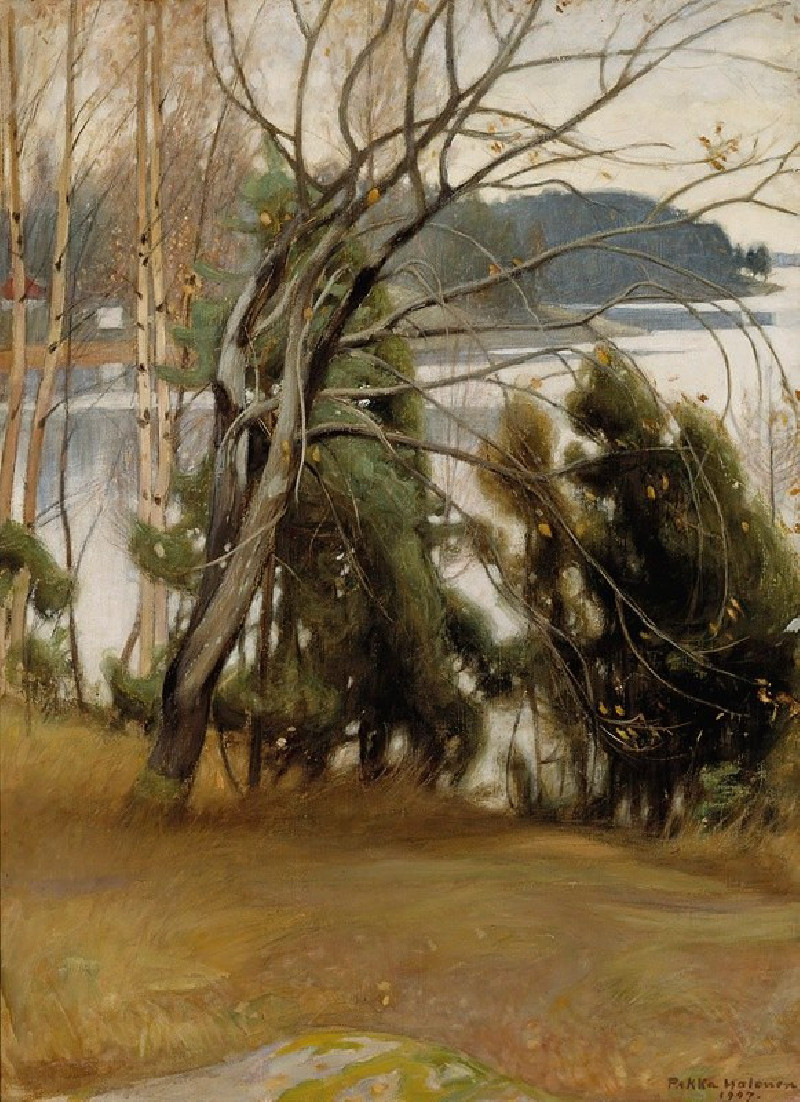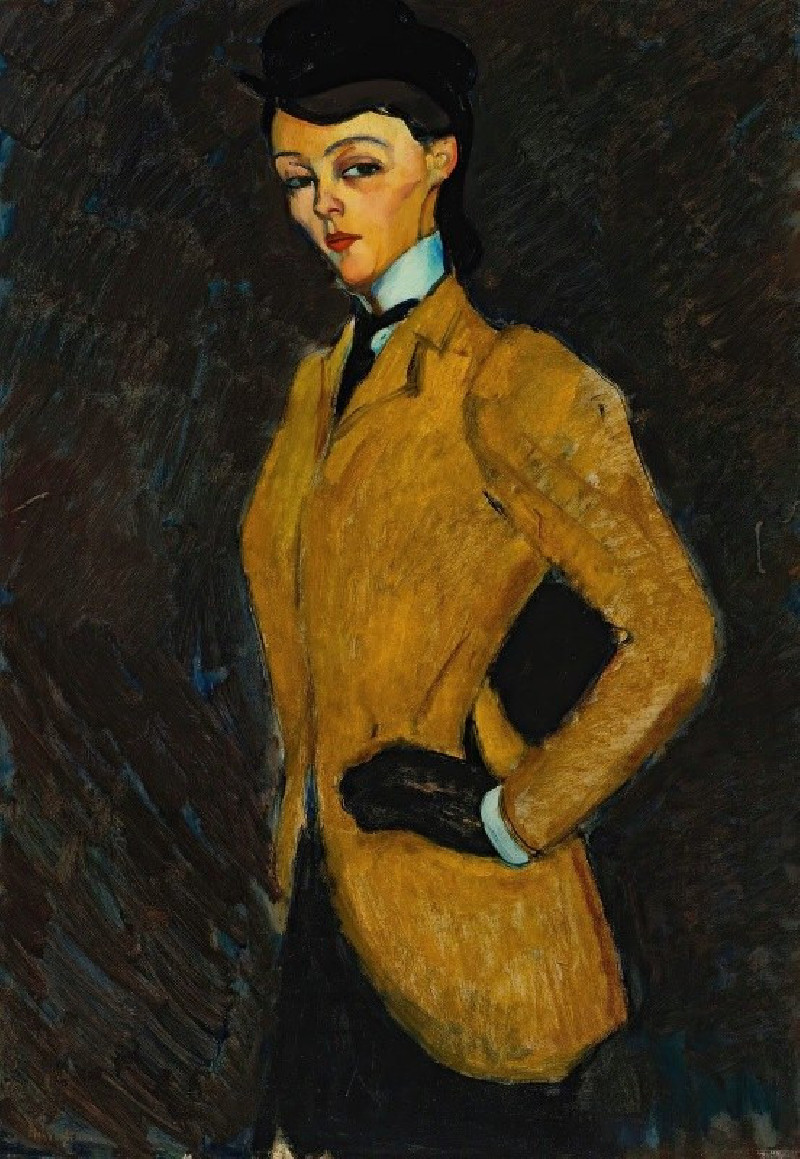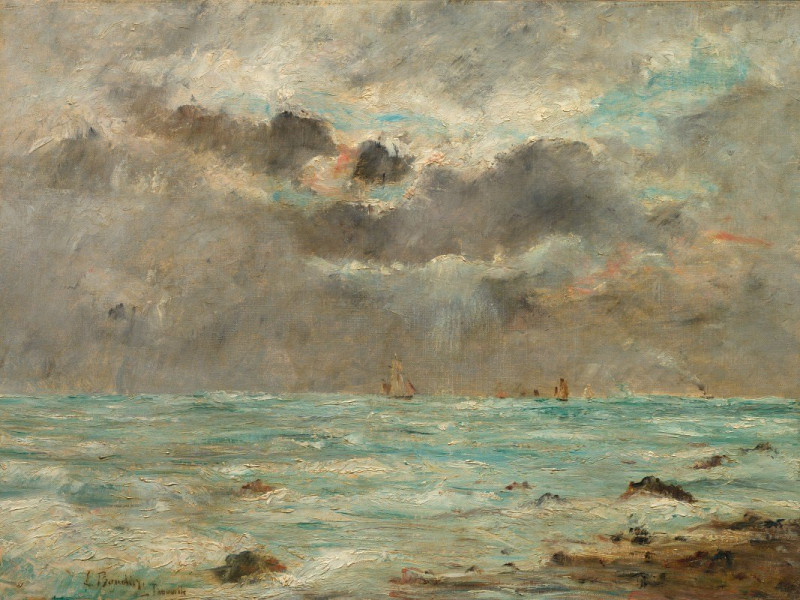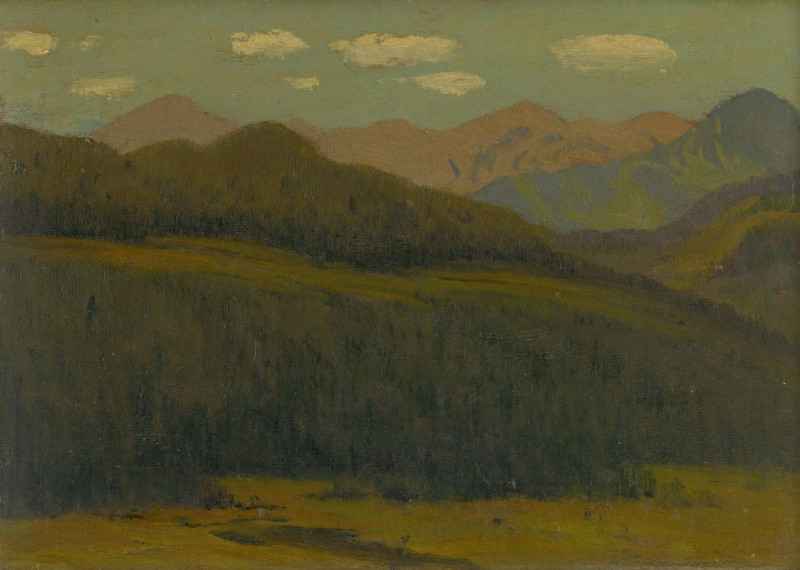Jacob’s Journey (1633)
Technique: Giclée quality print
Recommended by our customers
More about this artwork
Giovanni Benedetto Castiglione’s masterpiece, "Jacob’s Journey," painted in 1633, is a captivating visual narrative that brings to life a biblical story rich in drama and natural beauty. This painting illustrates the journey of Jacob, a key patriarch in the Bible, who is depicted here amidst an evocative landscape, guiding his family and flocks across a river ford.The composition of the painting is masterfully orchestrated to guide the viewer’s eye across the canvas. On the left, a rocky terrain provides a meeting point for Jacob’s diverse entourage. The scene is bustling with activity: a man on horseback leads a cow, essential for their journey’s supplies, while another man attempts to manage a small flock of sheep crossing the water. Each character, depicted with precise and expressive detail, contributes to the story of travel and migration.The right side of the painting features Jacob, notable for his directive gesture and prominent position. He points forward, leading and encouraging his followers and livestock through the challenging terrain. His leadership is undeniable, as depicted by Castiglione’s dramatic use of light and shadow, highlighting Jacob against the darker, more tumultuous background.Beyond the human and animal figures, the landscape itself plays a crucial role in the narrative. The lush greens of the trees and the rough textures of the rocks contrast with the soft, ambiguous background, suggesting the unknowns that lie ahead in Jacob’s journey. The painter’s use of muted earth tones adds a sense of timelessness and gravity to the scene, underscoring the enduring nature of the biblical story.
Delivery
Returns
Giovanni Benedetto Castiglione (23 March 1609 – 5 May 1664) was an Italian Baroque painter, printmaker and draftsman, of the Genoese school. He is best known now for his etchings, and as the inventor of the printmaking technique of monotyping. He was known as Il Grechetto in Italy and in France as Le Benédette.
He painted portraits, history paintings and landscapes, but came to specialize in rural scenes with more animals than human figures. Noah's ark and the animals entering the Ark was a favourite subject of his, and he devised a number of other new subjects from the early parts of the Old Testament with the patriarchs and their animals.

